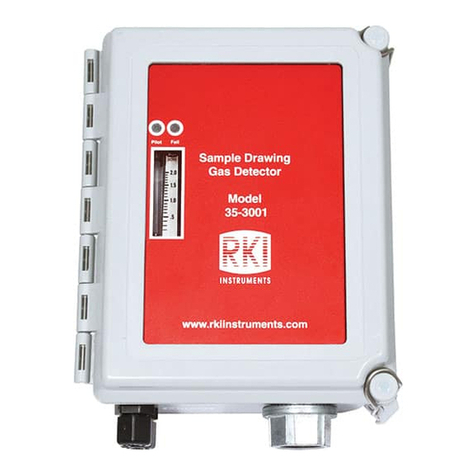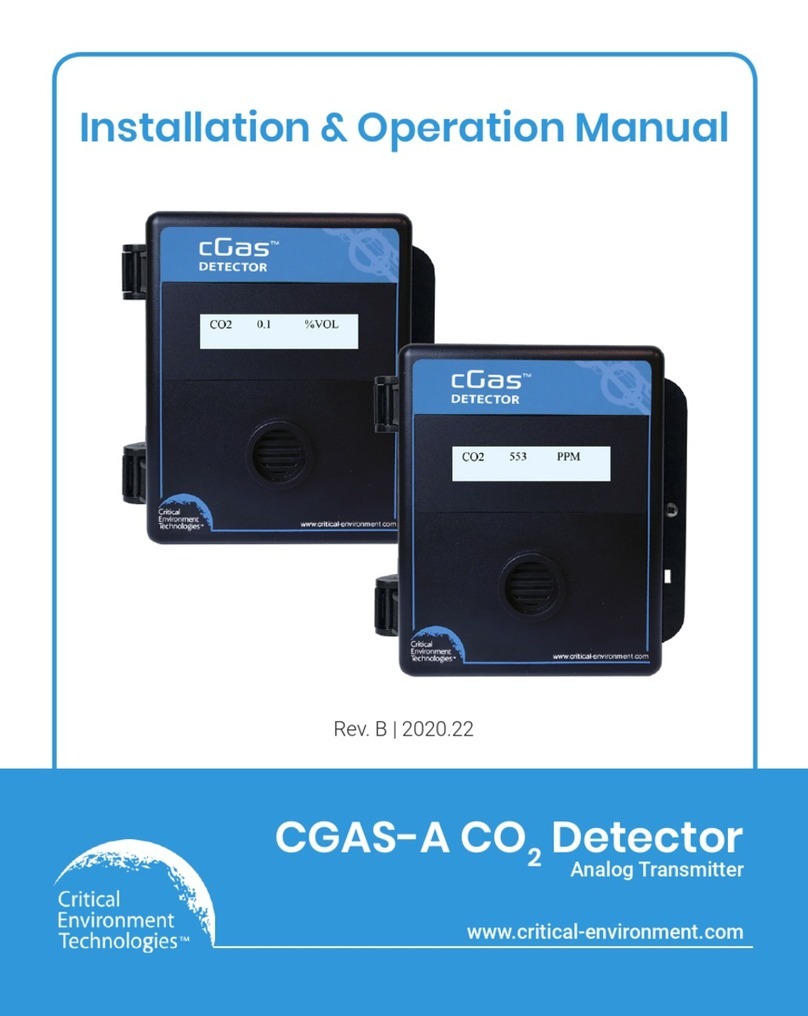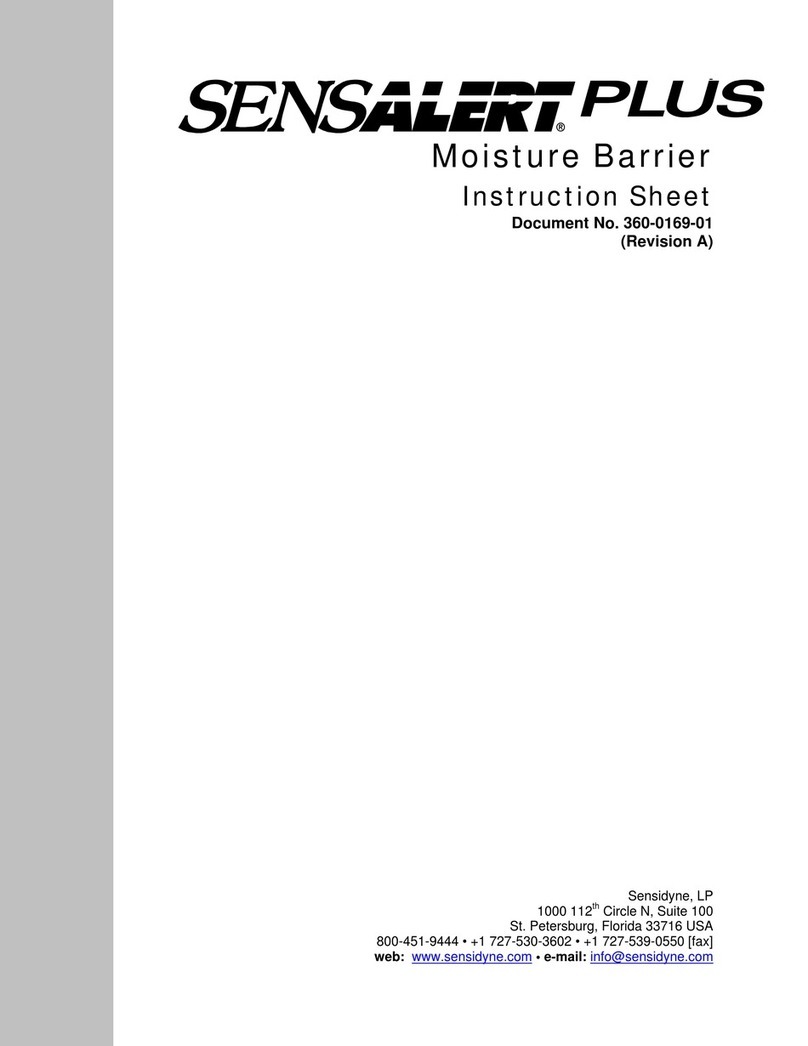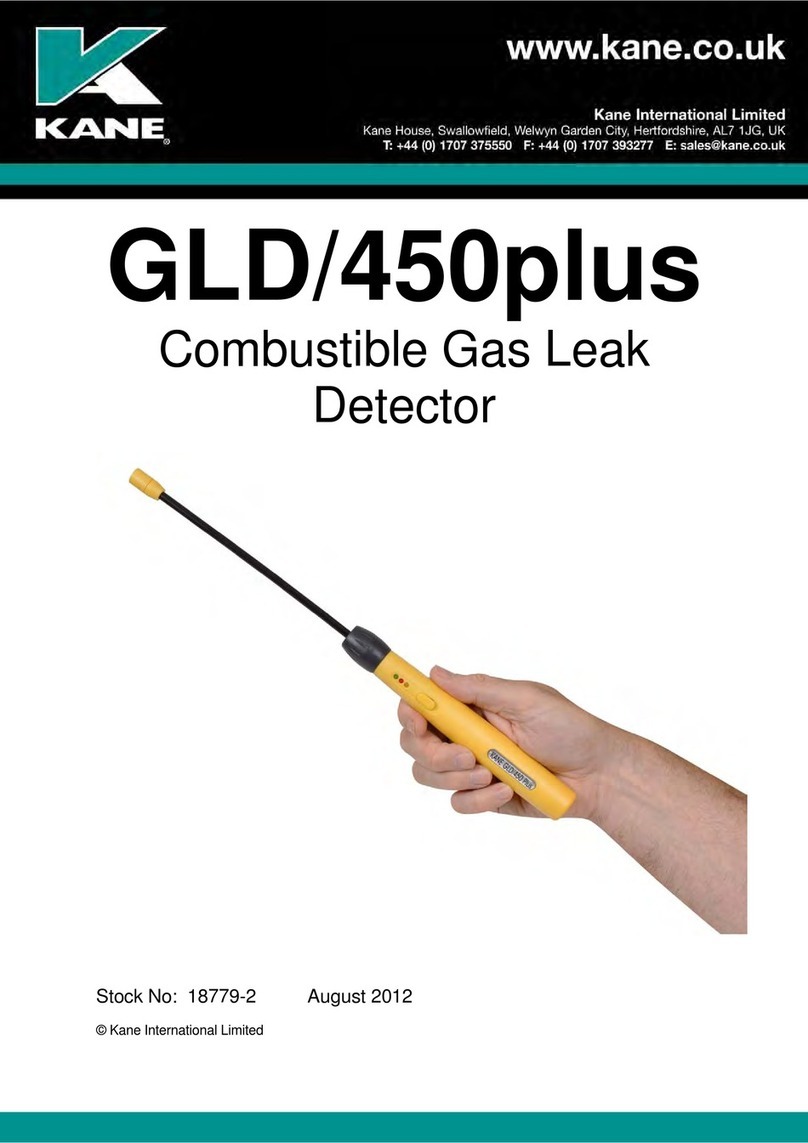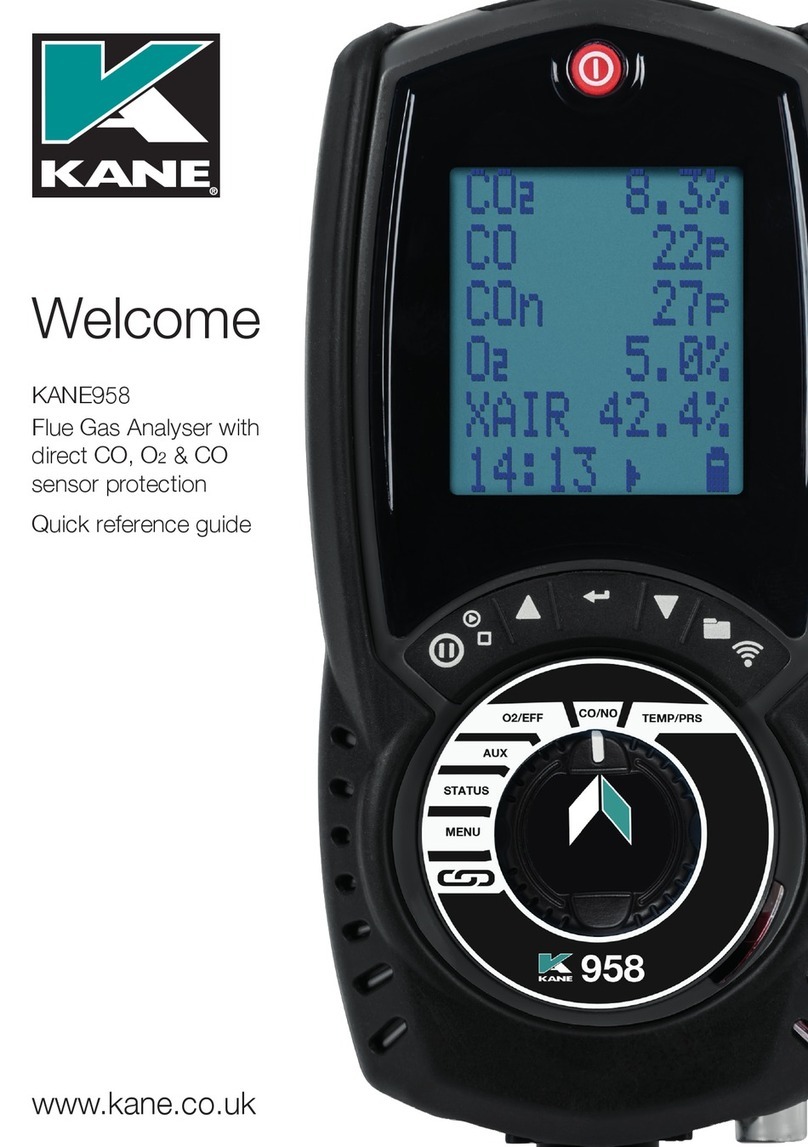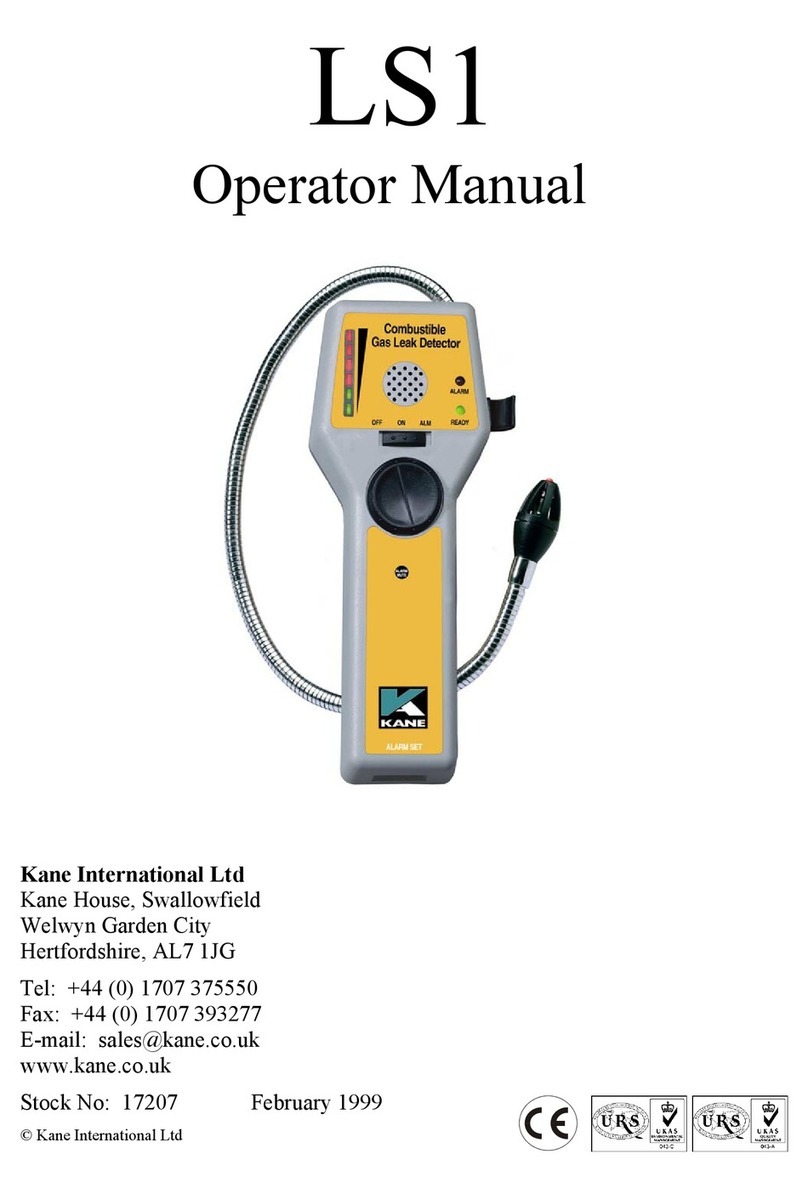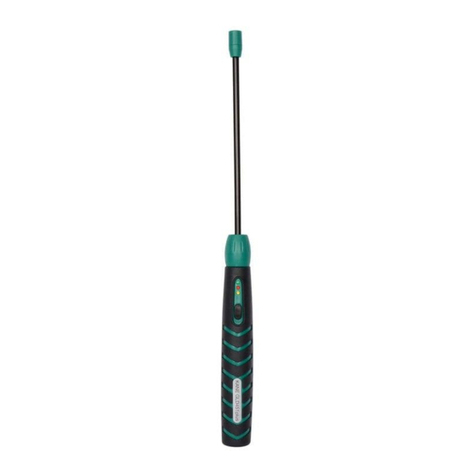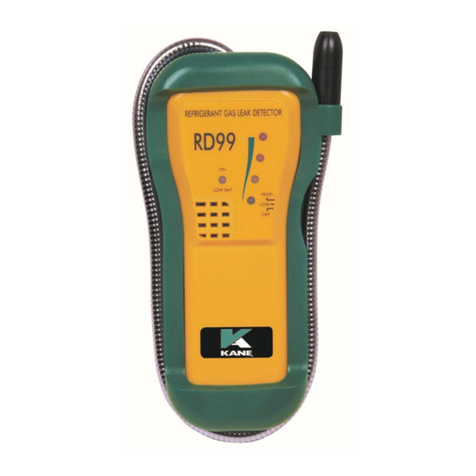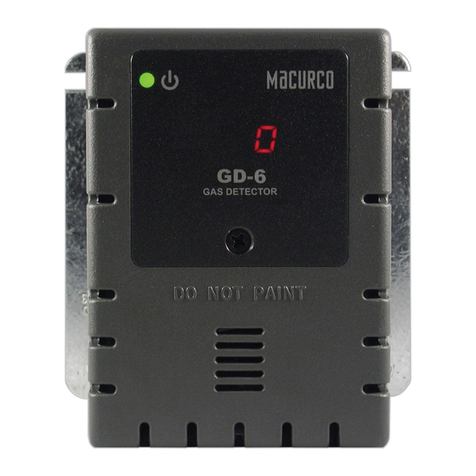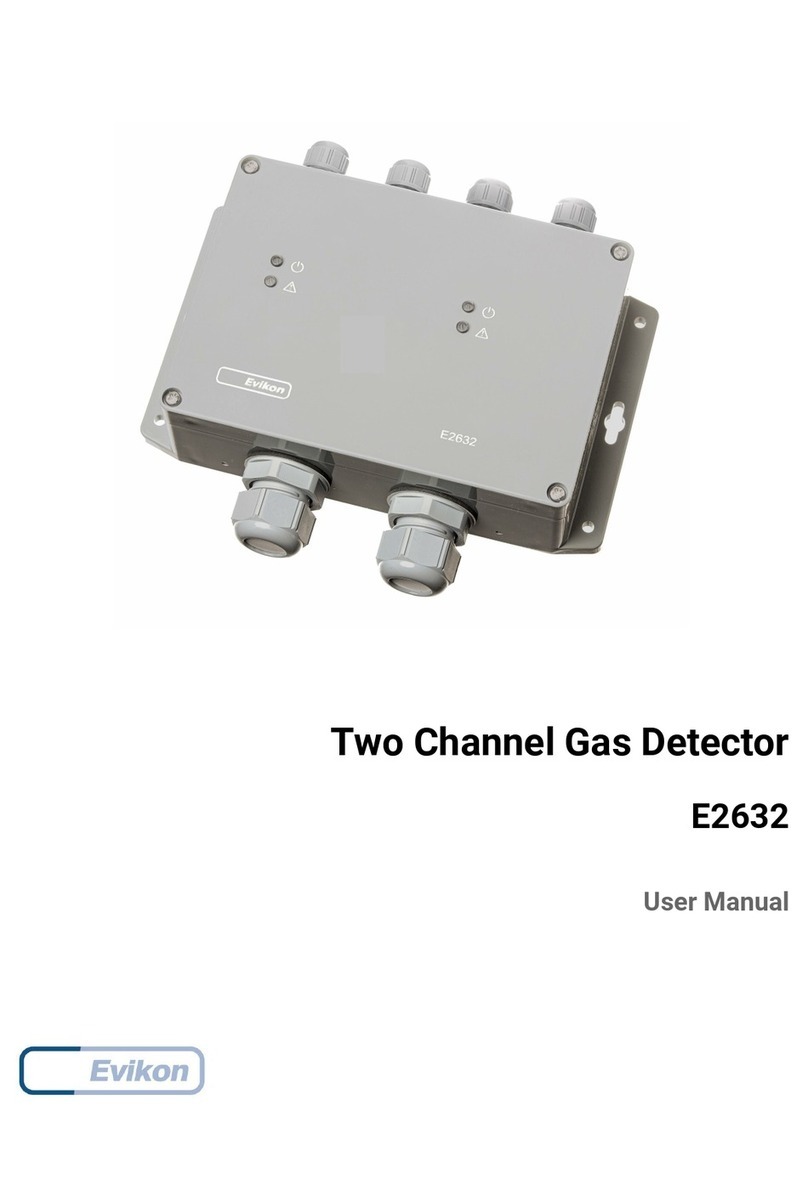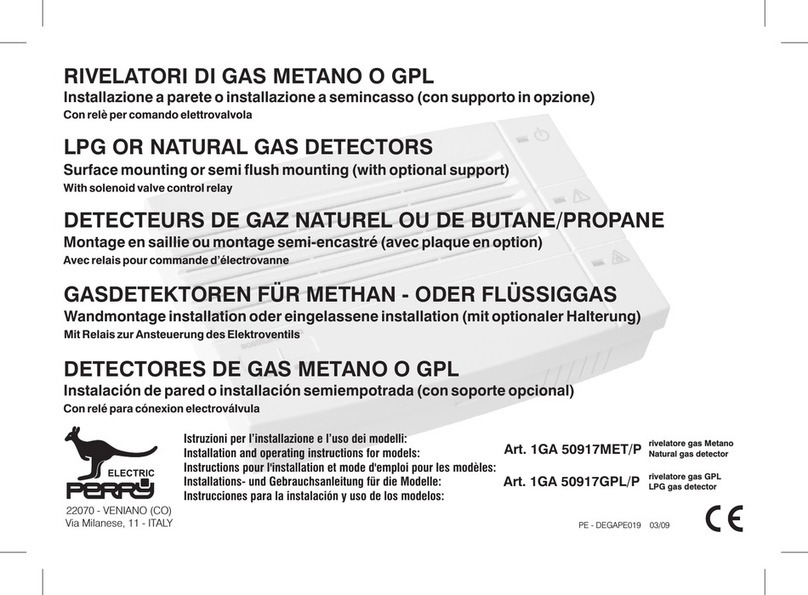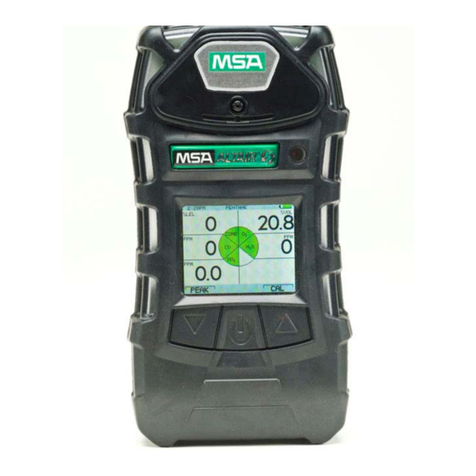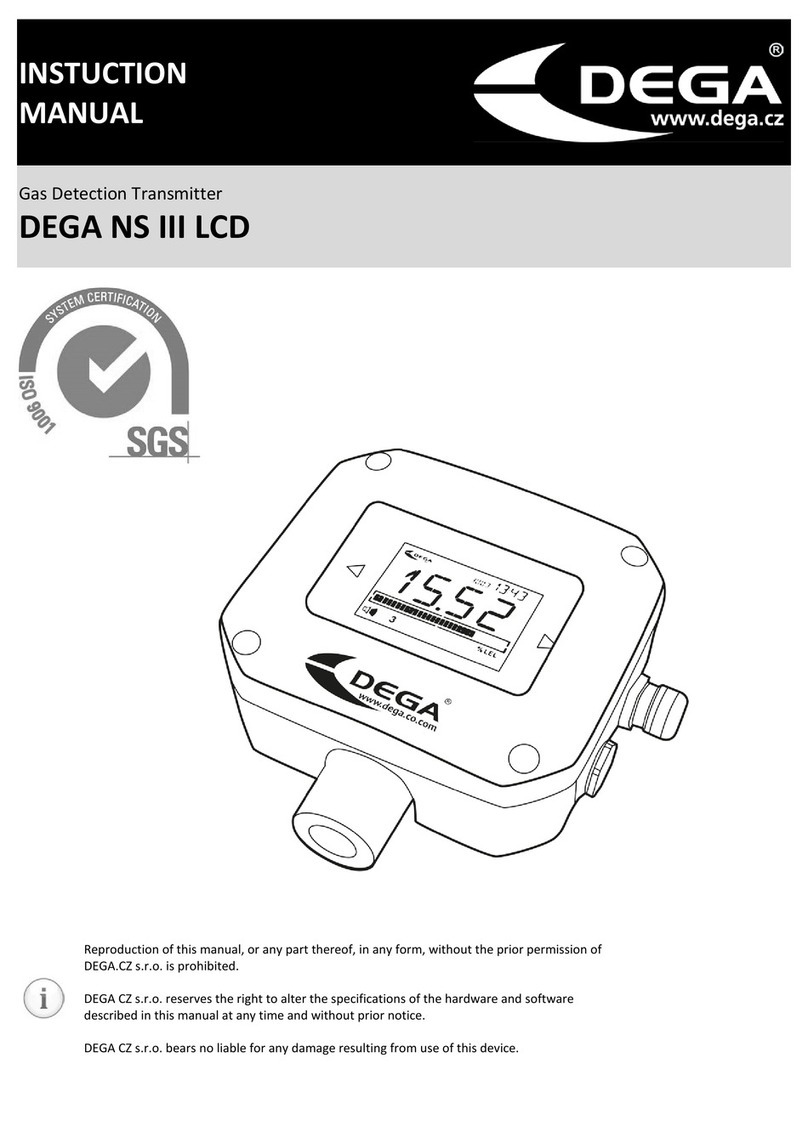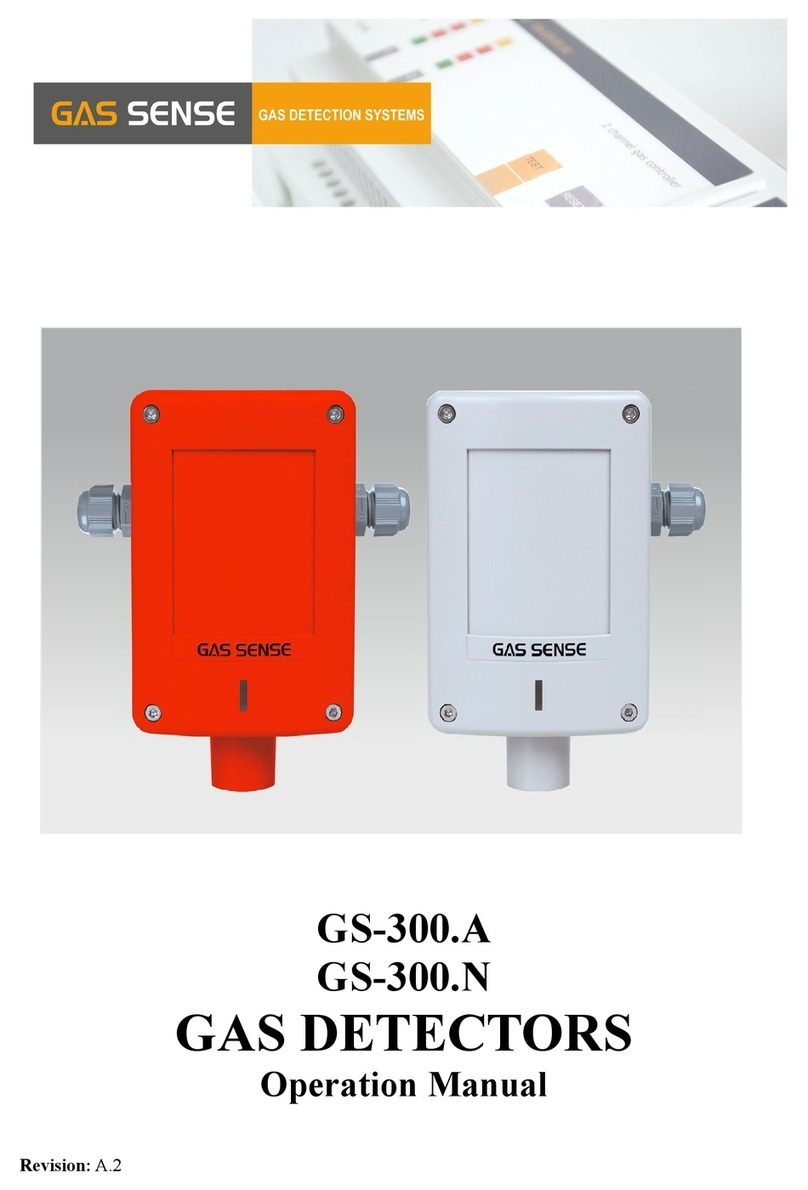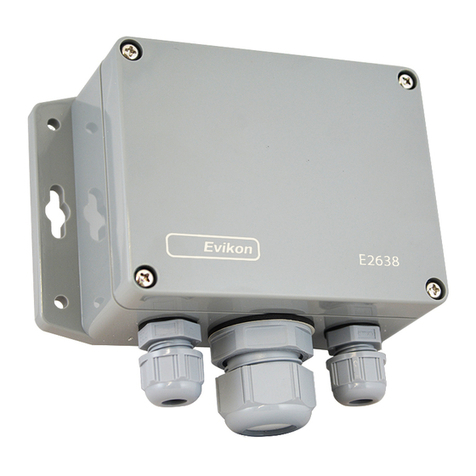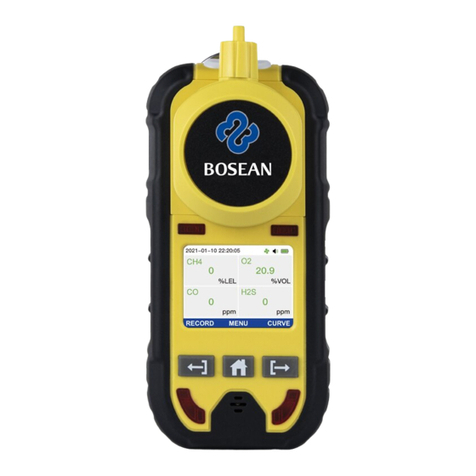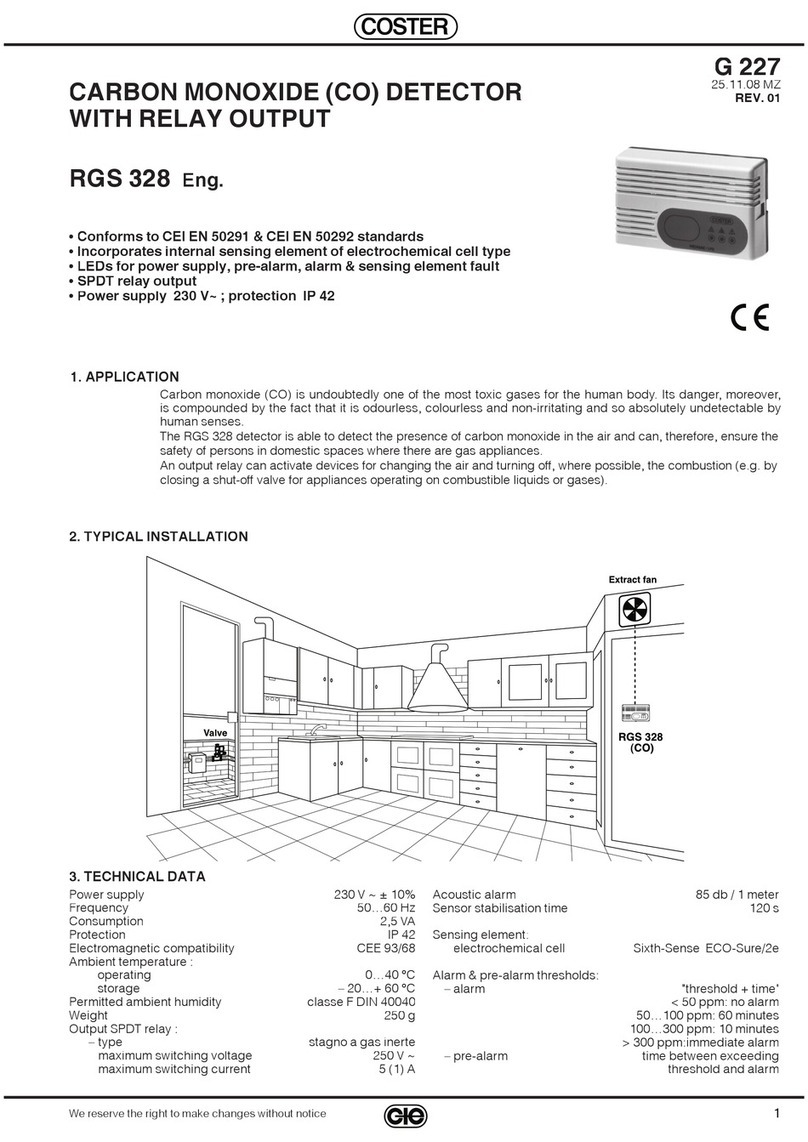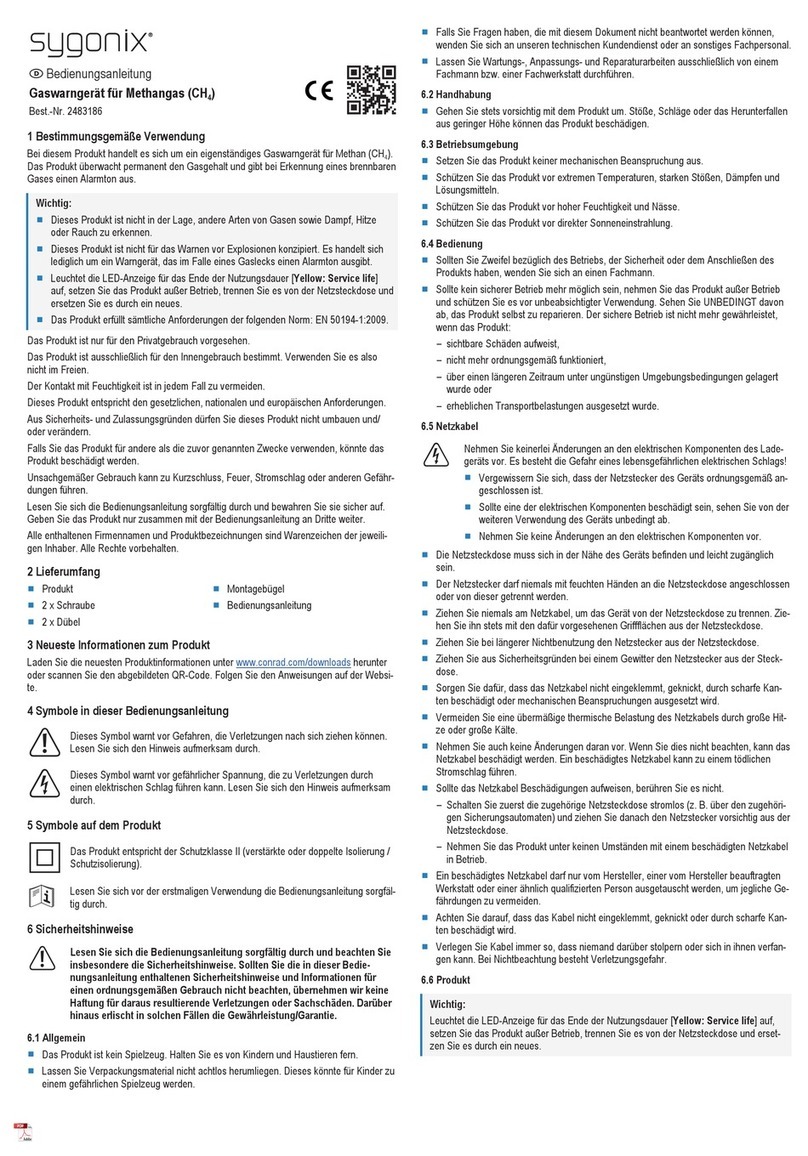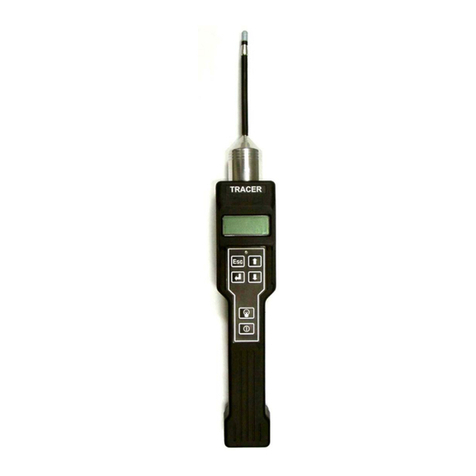
. Turn the instrument on by rotating the thumbwheel
downwards in a non-contaminated environment. i.e.
Fresh Air.
. The green Power LED will be illuminated when the
unit is turned on. If the battery level is low then the
red LED will be steady and the tic rate will not be
adjustable. The battery will need replacing.
. Adjust to a slow uniform tic rate with the use of the
thumbwheel (approximately 2 ticks per second). This
sets the instrument to the background level, you
should start your testing by setting in fresh air. The
red LED indicator will flash in correspondence with
the tic rate. Please allow around 10 seconds for the
sensor to stabilise indicated by a steady tic rate.
However it may occasionally require up to 2 minutes
to stabilise under some conditions.
. The unit responds to gas with a variable audible
ticking sound. The audible tic increases in volume
when exposed to gases with 50 parts per million or
more. When gas is detected the tick rate will increase,
rotate the thumbwheel back to the steady tick,
resetting the instrument to this new background level.
Move the instrument into higher concentrations of
gas (indicated by increased tick rate) until the leak is
found.
Downloaded from Elcodis.com electronic components distributor
